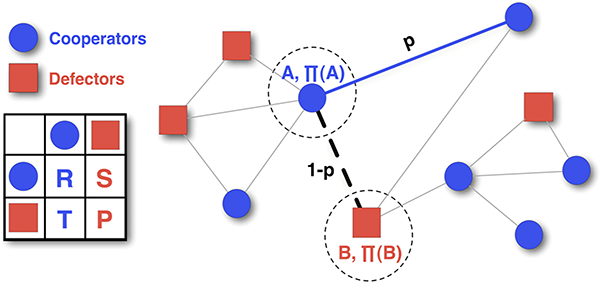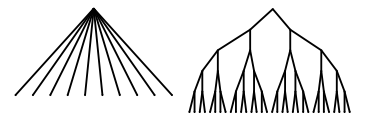One field of study that greatly interests me is evolutionary game theory. The central question of the field is: how does altruism evolve? In a naive analysis, it would seem that uncooperative individuals can get ahead of the rest of their species, and uncooperative offspring will come to dominate the population. Nonetheless, in the real world we observe mixtures of cooperative and non-cooperative behavior.
In evolutionary game theory, “cooperation” is understood as a strategy in a two-player game. Most commonly, we consider the prisoner’s dilemma game, where two players each have the choice to cooperate or defect. “Defecting” is a strategy that benefits yourself, but hurts your opponent even more. And so if both players defect, then they’re both worse off than if they had cooperated.
The key to the evolution of cooperation is the ability to react to defectors. In particular, one needs to punish defectors, such that defection is no longer beneficial.
Here I’ll talk about one model that allows for such punishment, based on a paper titled, “Cooperation prevails when individuals adjust their social ties“. As suggested by the title, the mechanism for punishment is to cut off ties with defectors.

Figure 1 from the paper illustrates a network of cooperators and defectors
[Read more…]


